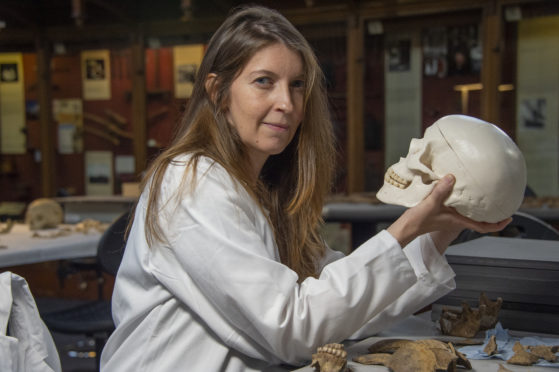University students have been given the chance to learn about the past through studying centuries-old bones.
They will reconstruct the lives of people who lived in the city hundreds of years ago, as part of a new osteoarchaeology course.
The vast collection of skeletons at Aberdeen University – which date from the Neolithic period to the Middle Ages – will be used as part of their studies.
This includes prehistoric body parts found in the north-east and Orkney Isles, as well as skeletons found across other parts of the country, and wider Europe.
Dr Rebecca Crozier, who leads the course, said that human skeletons were “essentially a diary of our lives.”
She said: “Human skeletons are the most tangible way of engaging with the long and rich story of our human past; providing an unparalleled insight into the lives of past people.
“Our students will learn how to unlock the wealth of information human skeletons can contain – from the techniques used in identification of human skeletal remains such as age-at-death, biological sex and height, to identifying and interpreting pathological lesions which can tell us about ancient health and disease and approaching more complex collections including those which have been cremated or burned.
“The scale of the collection in Aberdeen, and the fact that many of the skeletons come from the surrounding region, will allow the students to gain a real insight into what life was like here over the centuries.
“I am thrilled that our students will have access to these collections to develop their own research.”
The new MSc in Osteoarchaeology course is based at Marischal College to allow students to work within the museum collections centre – home to one of the largest collections of human skeletons in Europe.
Students will present their findings on their course work at the end of the year.
Patara Rattanachet, originally from Thailand, said the opportunity to work on the course was “fantastic.”
He said: “I’m doing a Master’s project on the reconstruction of cremated individuals from St Fergus in Aberdeenshire, and working on fragments from the early bronze age – from about 1600BC.
“The misconnection about cremation is that it is not completely ashes, there are fragments left to work with.
“I’m reconstructing the teeth to see the burning patterns and try find out more about the people’s background – and the whole process has been really enjoyable so far.”










